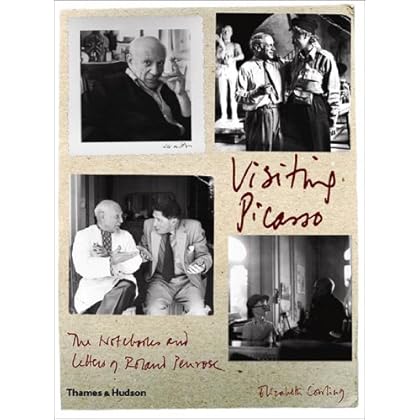Visiting Picasso: The Notebooks and Letters of Roland Penrose
Category: Books,Biographies & Memoirs,Arts & Literature
Visiting Picasso: The Notebooks and Letters of Roland Penrose Details
About the Author Elizabeth Cowling was co-curator of the blockbuster exhibition Matisse Picasso (Tate Modern, Grand Palais, Museum of Modern Art). Her publications include Picasso: Sculptor/Painter with John Golding and Picasso: Style and Meaning. Read more

Reviews
Penrose was a central figure of the Surrealist movement and a gifted writer as well as a minor artist. In the mid-1930s, as a friend of the Bloomsbury group and an intellectual advocate of Surrealism, he had the opportunity to meet Picasso. He joined the long list of those who regarded the master with awe and over the next forty years the two carried on an increasingly involved correspondence, albeit one which was to some extent one-sided when it came to actually writing letters. Elizabeth Cowling, the editor, does an excellent job of organizing a correspondence which lasted some forty years during which Penrose wrote numerous articles and a major biography of Picasso and organized exhibits of his work. Her excellent notes make the entire book highly readable and provides a wonderful flow to the text.Penrose was married to famed photographer Lee Miller, whose beauty and intelligence virtually guaranteed his easy access to the painter when others were turned away at the gate. Most of the 72 photographs interspersed among the 400 pages are by Miller. Her status as a war correspondent (and her extraordinary courage) allowed her to visit Picasso in Paris on Liberation Day in August, 1944, when German snipers were still active in the city.One of the benefits of writing an "authorized" biography (at least one to which the artist did not object) was Penrose's ability to finance frequent travel to contact anyone and everyone who knew Picasso. Penrose's close friendships with such key figures of Surrealism as Paul Eulard and his advocacy of the style in Britain gave him credibility and contact with virtually all major figures in the art world at the time.Cowling does an excellent job of presenting his original letters to and from the artist, edited only for clarification, and also Penrose's original notes of a vast number of interviews of artists, scholars, dealers, friends, former mistresses and others among the extended family of Picasso. Cowling's text at appropriate points allows us to understand the context and significance of each letter, interview note, anecdote, etc. She also includes Penrose's letters and notes of conversations with figures such as Jacqueline and Francoise after Picasso's death, and she provides some 50 pages of footnotes and indexes to make this a very informative text. There are so many books on Picasso; this one is unique and provides a new perspective.


